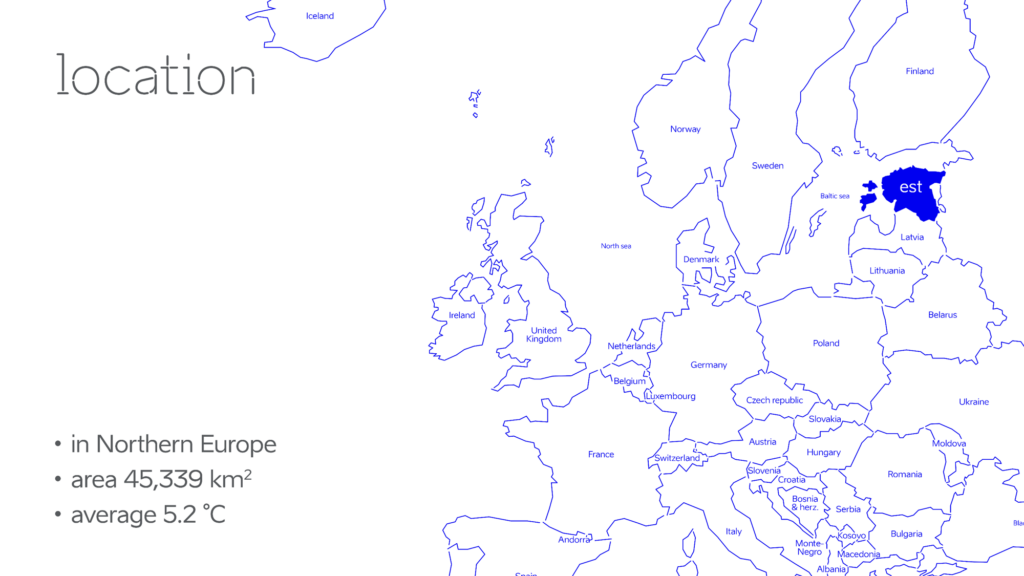Estonia is one of the three Baltic States covering an area of 45,339 square kilometres. Situated on the north-eastern edge of the Baltic Sea, Estonia borders Latvia to the south and the Russian Federation to the east.

The capital of Estonia is Tallinn. The nordic-medieval Tallinn near the Baltic Sea that has excellent connections with Helsinki, Stockholm and St Petersburg and is also one of the world’s smartest cities. The second largest city and the centre of Southern Estonia is Tartu. The city has always been knows as the intellectual capital of Estonia. It is the cradle of the Estonian Song Festival, Estonian Theatre and the Estonian State.
Estonia boasts a long tradition of providing quality education. Its vibrant and international education and research environment, endowed with the latest developments in information technology makes Estonia an attractive place for people looking to work and study abroad. A top quality which unites Estonians is a reverence for science and technology.
- Head of the State: the President
- National legislature: the Riigikogu, unicameral parliament of 101 members.
- Executive power: exercised by the Government, headed by the Prime Minister.
- Highest judicial power: Supreme Court
Population density in Estonia is 30.3 people per km². That is almost four times less than EU’s average – 116.7 people per km² –, making Estonia the third sparsely populated country in EU. According to Statistics Estonia, the preliminary estimate of the population of Estonia as at 1 January 2018 was 1,318,700.
About 1.1 million people speak Estonian, one of the world’s smallest official national languages. It is used successfully in all areas of society. Estonians also speak a variety of other languages.